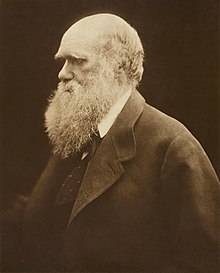
| Part of a series on |
| Evolutionary biology |
|---|
 |
The scientific study of speciation — how species evolve to become new species — began around the time of Charles Darwin in the middle of the 19th century. Many naturalists at the time recognized the relationship between biogeography (the way species are distributed) and the evolution of species. The 20th century saw the growth of the field of speciation, with major contributors such as Ernst Mayr researching and documenting species' geographic patterns and relationships. The field grew in prominence with the modern evolutionary synthesis in the early part of that century. Since then, research on speciation has expanded immensely.
The language of speciation has grown more complex. Debate over classification schemes on the mechanisms of speciation and reproductive isolation continue. The 21st century has seen a resurgence in the study of speciation, with new techniques such as molecular phylogenetics and systematics. Speciation has largely been divided into discrete modes that correspond to rates of gene flow between two incipient populations. Current research has driven the development of alternative schemes and the discovery of new processes of speciation.
© MMXXIII Rich X Search. We shall prevail. All rights reserved. Rich X Search
